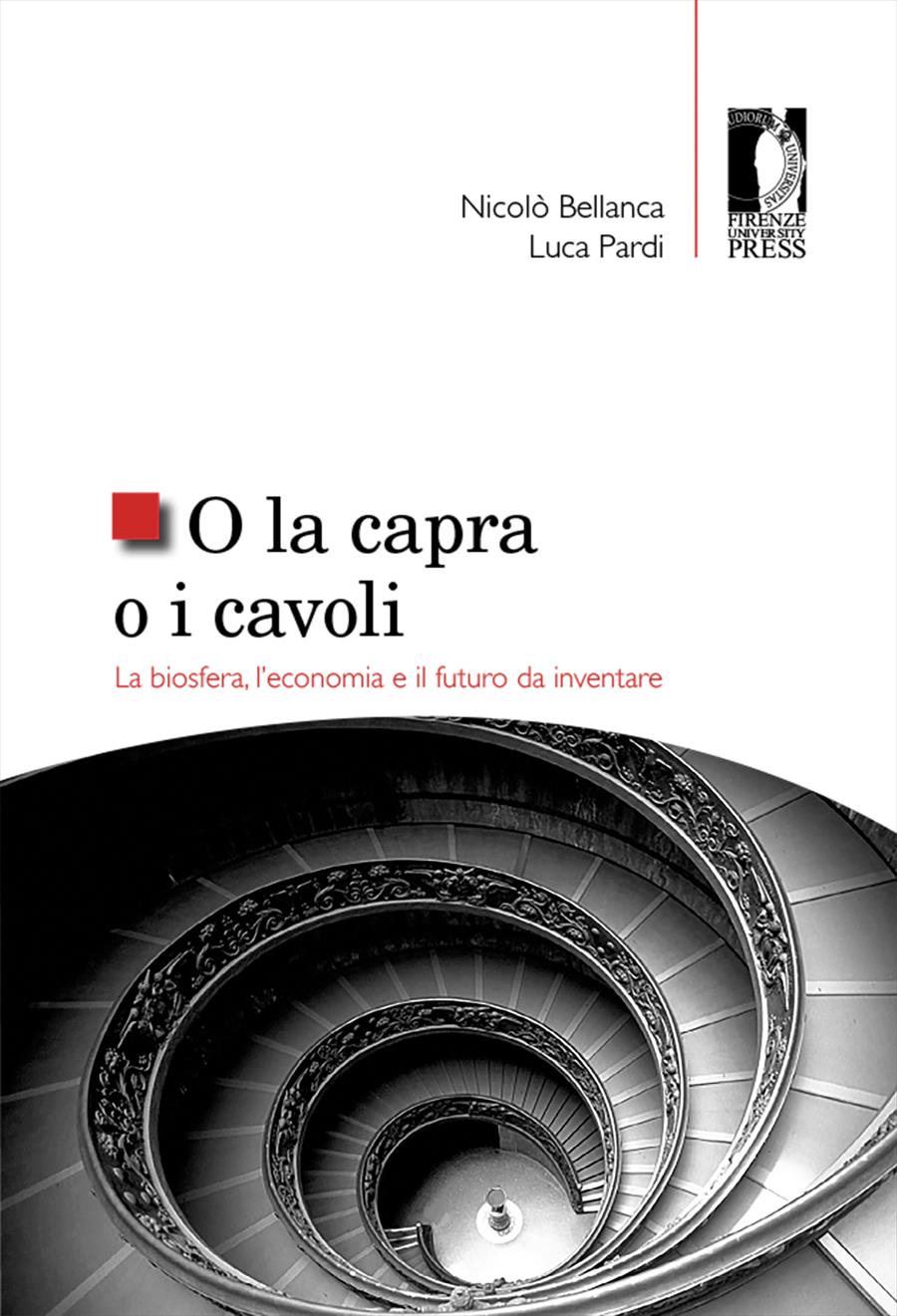- O la capra o i cavoli
- Nicolò Bellanca, Luca Pardi
Per una teoria del declino delle società complesse
- Nicolò Bellanca
- Luca Pardi
- © 2020 Author(s) |
- CC BY 4.0
- DOI: 10.36253/978-88-5518-195-2.13
To explain social decline, a first mechanism notes that elites, understood as small and relatively homogeneous groups, have a superiority to act in concert, compared to the masses. When the capitalist dynamics offers great opportunities to take advantage, and when such opportunities distribute costs over large groups, while concentrating the benefits in a few hands, then the elites have an incentive to intervene. To maintain privileged access to opportunities, elites seek alliances and resort to all forms of social power. Society decays when this path transforms it into a network of particularistic groups, committed to dividing given resources, instead of innovating and improving. A second mechanism is based on the responses of complex societies to challenges. The answers try to bridge the gap between the complexity of the control system and the increased complexity of the controlled system. They may consist either in constructing hierarchical modules, so that many subjects obey a few, or in multiplying the connections through reticular structures. The more the answer stratifies the hierarchy, the more the management costs of the apparatus increase. On the other hand, the more it insists on links, the more coordination costs increase between the many players in the network. The society tends to swing from one to the other, depending on which becomes more onerous. But both modes lead in the long run to decreasing energy returns, pushing the system on a path of decline. Even without the claim of composing an exhaustive investigation, the two mechanisms arise from some of the most relevant and recurrent characteristics of complex human societies: respectively, the difficulties of cooperation and the difficulties of responding to the arising of new systemic problems. In this sense, the two mechanisms may be able to help us understand what happens and what could happen.
- Keywords:
- Social decline,
- Joseph Schumpeter,
- Mancur Olson,
- Joseph Tainter,
- Collective action,
- Complexity,
University of Florence, Italy - ORCID: 0000-0002-3809-3455
CNR-IPCF, Institute for Chemical-Physical Processes, Italy - ORCID: 0000-0002-6870-1490
- J. A. Ayers, Sustainability, CRC Press, London 2017. E. Beinhocker, The Origin of Wealth: Evolution, Complexity, and the Radical Remaking of Economics, Harvard University Press, Cambridge (Mass.) 2005. N. Bellanca, L’economia del noi, Università Bocconi e
- R. Biggs et al. (a cura di), Principles for Building Resilience, Cambridge University Press, Cambridge 2015.
- L. E. Davis e R. A. Huttenback, Mammon and the Pursuit of Empire: The Political Economy of British Imperialism, 1860-1912, Cambridge University Press, Cambridge 1986. B. Fix, Energy, hierarchy and the origin of inequality, “PlosOne”, 14(4), 2019, pp. 1-32
- G. C. Gallopín, Linkages between vulnerability, resilience, and adaptive capacity, “Global Environmental Change”, 16, 2006, pp. 293-303. Y. Guillemette e D. Turner, The Long View: Scenarios for the World Economy to 2060, “Economic Policy papers OECD”, 22,
- A. Lako’, Unprepared. Global Health in a Time of Emergency, University of California Press, Oakland 2017. G. D. Middleton, Understanding Collapse, Cambridge University Press, Cambridge 2018.
- E. Moe, Mancur Olson and structural economic change, “Review of International Political Economy”, 16(2), 2009, pp. 202-230. M. Olson, Ascesa e declino delle nazioni, Il Mulino, Bologna, 1984 (ed. orig. 1982).
- T. Philippon, The Great Reversal, Harvard University Press, Cambridge (Mass.), 2019.
- R. A. Posner, Catastrophe: risk and response, Oxford University Press, Oxford, 2004.
- J. Ravetz, When communication fails. A study of failures of global systems, in A. Guimarães Pereira et al. (a cura di), Interfaces between Science and Society, Greenleaf Publishing, Sheffield 2006.
- M. Renner, Climate Change and Displacements, in The Worldwatch Institute (a cura di), State of the World 2013: Is Sustainability Still Possible?, Island Press, Washington (DC) 2013.
- G. Sartori, Democrazia: cosa è, Rizzoli, Milano 1993.
- J.A. Schumpeter, Capitalismo, socialismo e democrazia, Etas, Milano 2001 (ed. orig. 1942).
- S. Sieniutycz, Complexity and Complex Thermo-Economic Systems, Elsevier, Amsterdam 2020. H. A. Simon, The architecture of complexity, “Proc. Am. Philos. Soc.”, 106(6), 1962, pp. 467-482. J. Tainter, The Collapse of Complex Societies, Cambridge University
- J. A. Tainter e T. Patzek, Drilling Down, Springer, New York 2012.
- C. Tilly, Le rivoluzioni europee, 1492-1992, Bari: Laterza 1993. P. Turchin, Historical Dynamics. Why States Rise and Fall, Princeton University Press, Princeton 2003.
Chapter Information
Chapter Title
Per una teoria del declino delle società complesse
Authors
Nicolò Bellanca, Luca Pardi
Language
Italian
DOI
10.36253/978-88-5518-195-2.13
Peer Reviewed
Publication Year
2020
Copyright Information
© 2020 Author(s)
Content License
Metadata License
Bibliographic Information
Book Title
O la capra o i cavoli
Book Subtitle
La biosfera, l’economia e il futuro da inventare
Authors
Nicolò Bellanca, Luca Pardi
Peer Reviewed
Number of Pages
210
Publication Year
2020
Copyright Information
© 2020 Author(s)
Content License
Metadata License
Publisher Name
Firenze University Press
DOI
10.36253/978-88-5518-195-2
ISBN Print
978-88-5518-194-5
eISBN (pdf)
978-88-5518-195-2
Series Title
Studi e saggi
Series ISSN
2704-6478
Series E-ISSN
2704-5919
